In modern football, formations play a crucial role in shaping a team’s style and strategy. One such formation, the 1-3-5-2, has gained attention for its balance between defense and attack. This setup offers a solid defensive base while allowing for creativity and fluidity in the midfield and attack. In this article, we’ll break down the 1-3-5-2 formation, explaining how it works, its strengths, and why it’s favored by some of the game’s top managers. Whether you’re a player, coach, or fan, understanding this formation can give you a deeper insight into the beautiful game.
High Pressing in the 1-3-5-2 formation
Pressing high in a 1-3-5-2 formation involves using the two strikers to close down the opposition center-backs while the wingbacks push up aggressively to press the opposing fullbacks or wingbacks. The central midfielders, particularly the two advanced midfielders, must coordinate with the strikers to close down passing lanes and force the opposition into making hurried decisions. The key to success in this high press is the ability to compress the space and isolate the ball carrier, limiting their options and potentially winning the ball high up the pitch. The back three maintain a solid shape to guard against long balls or quick transitions, providing a safety net while the front and midfield lines apply pressure.
High press against a back four
Against a back four, the most natural way to press the opposition will be to go man-to-man. The two strikers will be responsible for the opposition center-backs, the wingbacks will push up on the opposition fullbacks, the midfielders will be 3v3 in the middle, and the center-backs will be responsible for the opposition attackers. Everyone has an opposition player they are responsible for marking, which makes it difficult for the opposition to find open players. Here is what it would look like against a 1-4-2-3-1 and 1-4-3-3 formation:
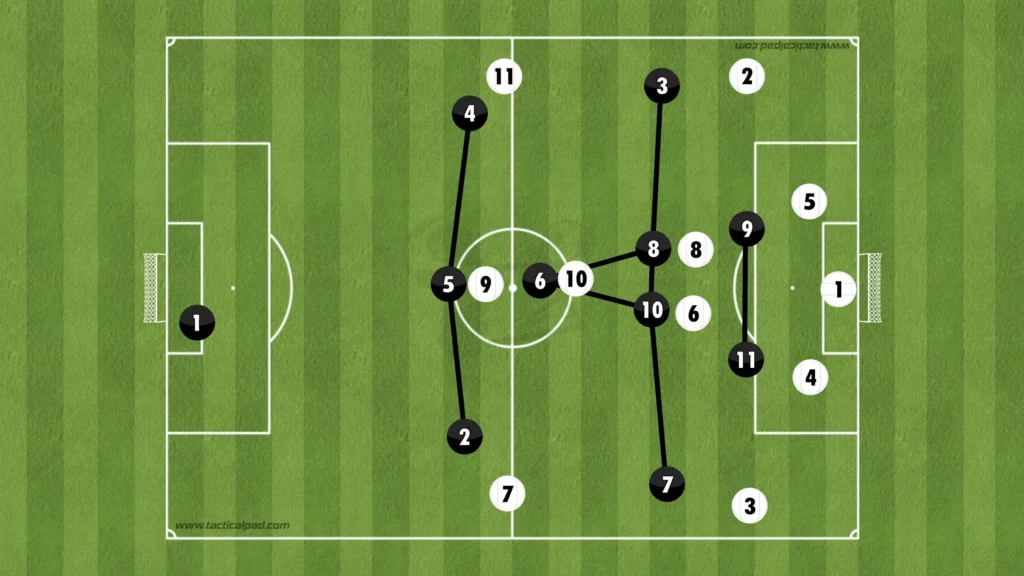

When defending man-to-man, the players must be good at defending 1v1 situations. If they are not and the opposition players win the 1v1 duels to get past their player, another player has to leave their marking, and the entire defensive structure collapses.
In a man-to-man system, it also becomes crucial that the players know when to mark the opponent they are responsible for and when not to. If an opponent, for example, is very far from the ball, the player marking him does not need to be as close to him. He can instead come in and help create numerical superiorities in the center, decreasing the risk of dangerous 1v1 situations. The players will always have an opposition player they are responsible for, however, they should never be closer to them than they need to be.
High press against a back three
Pressing against a back three works differently from pressing against a back four. The idea is to push the opposition to one side and leave the other open. The strikers are numerically inferior against the opposition backline, which means the far-side center-back has to be left open. The far-side striker closes the back-pass to the central center-back and the ball-side striker presses the ball-side center-back as hard as possible.
Pressing Against a 1-3-5-2
The ball-side striker presses a wide center-back when he gets the ball, the far-side striker closes the back-pass to the central center-back, and the far-side center-back is left open. This leaves the other players man-to-man apart from the backline, who are 3v2 against the opposition strikers.
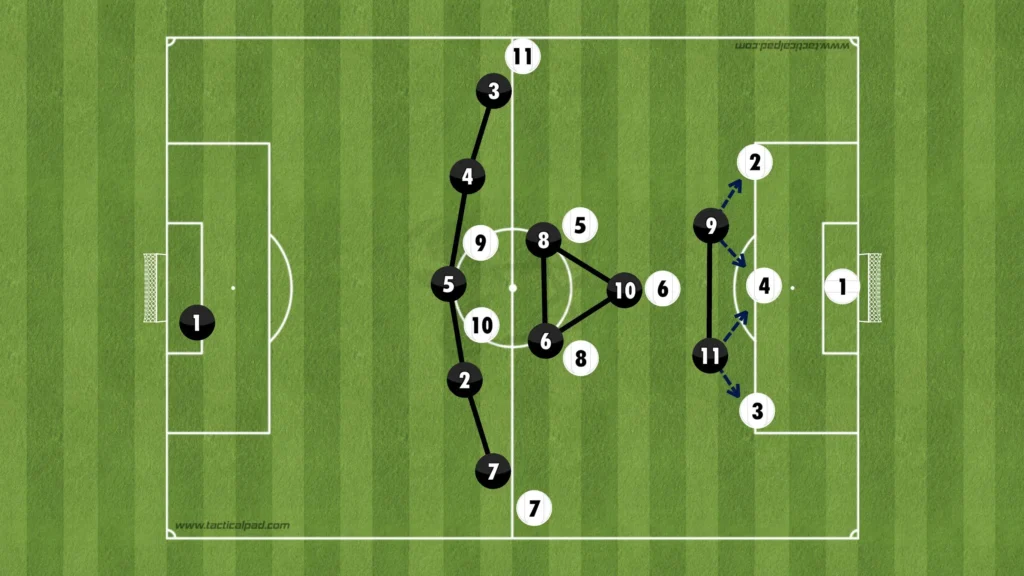
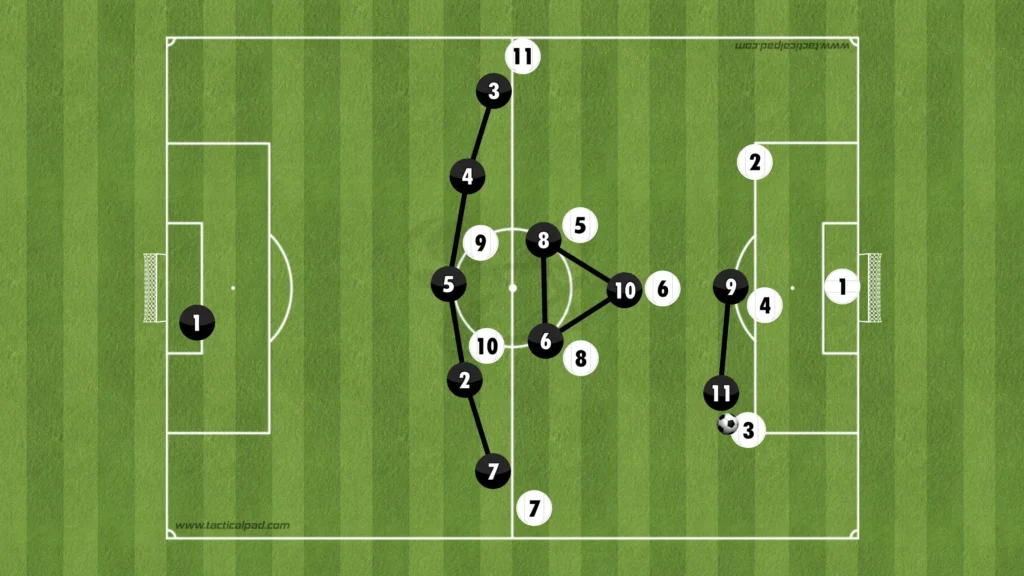
Pressing Against a 1-3-4-3
The ball-side striker presses a wide center-back when he gets the ball, the far-side striker closes the back-pass to the central center-back, and the far-side center-back is left open. The number-six moves to the ball-side to control the opposition’s attacking midfielder.
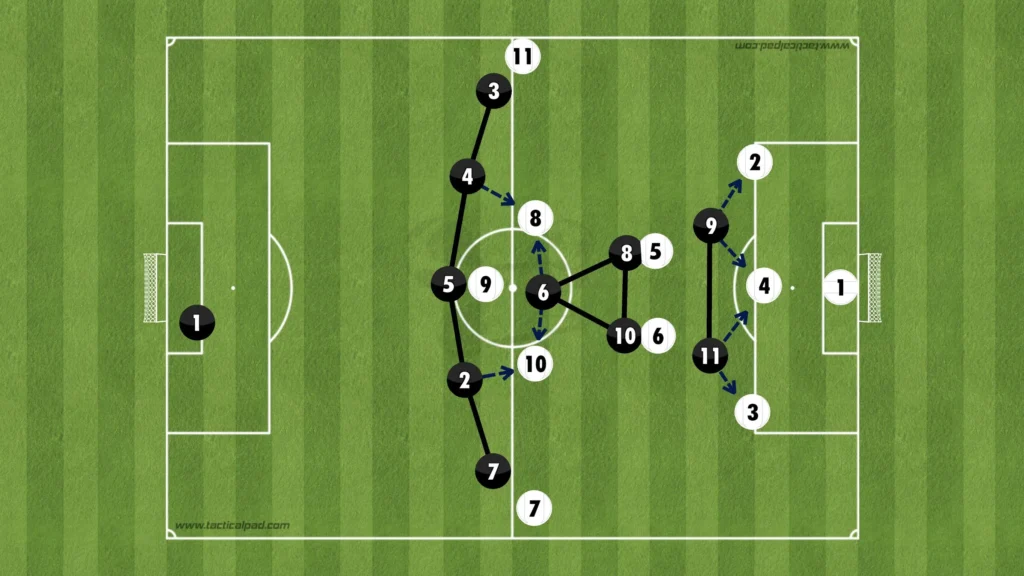
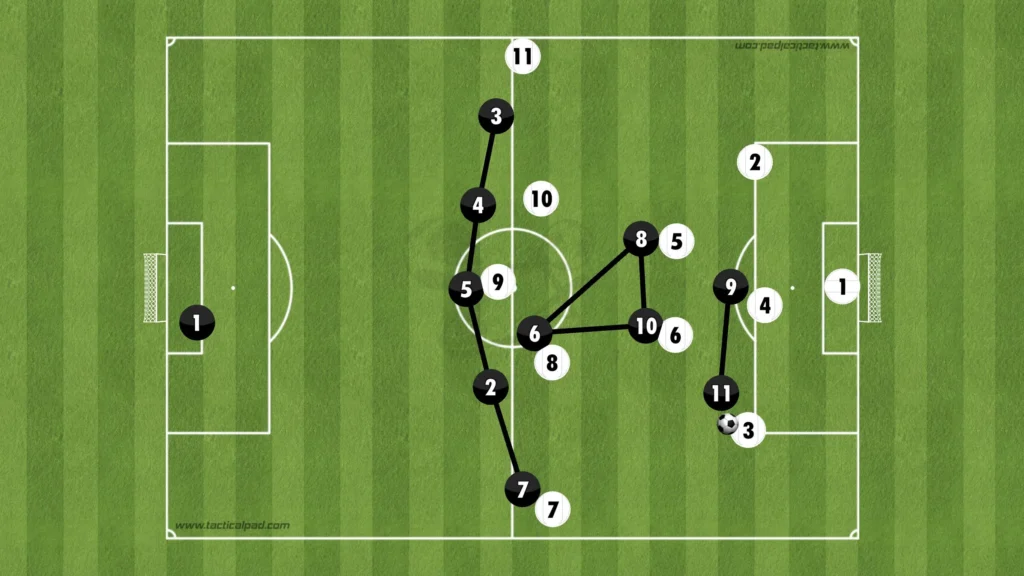
Mid/Low Press
Defending in a 1-3-5-2/1-5-3-2 formation is centered around maintaining compactness and leveraging the numerical strength in midfield. The three center-backs form a solid defensive base, supported by the wingbacks who drop back to create a five-man defensive line when under pressure. This structure allows the team to cover wide areas effectively, while the central midfielders are responsible for controlling the middle of the pitch and providing additional cover for the defense. The two strikers often play a key role in initiating the press, forcing the opposition to play wide or make risky passes. The defensive midfielder, positioned just in front of the back three, acts as a shield, breaking up play and closing down spaces that the opposition could exploit. This setup provides balance, with the ability to defend deep and counterattack quickly, while also being flexible enough to press higher up the pitch when needed.
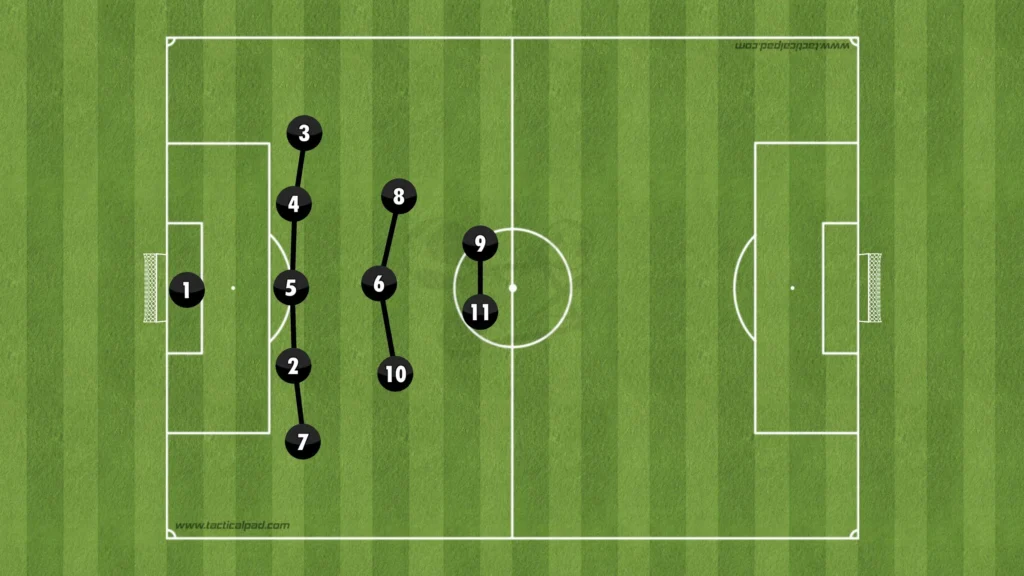
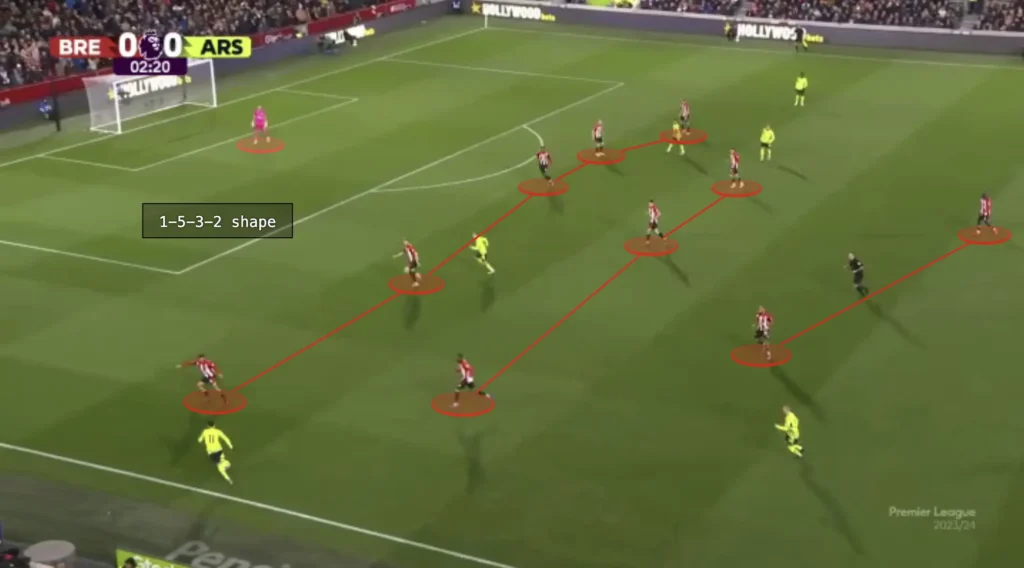
Closing the center
The advantage of defending in this formation is that it naturally closes the center and forces the opposition out to the flanks. It blocks off most ways towards the goal and when staying compact, it is difficult to break down.
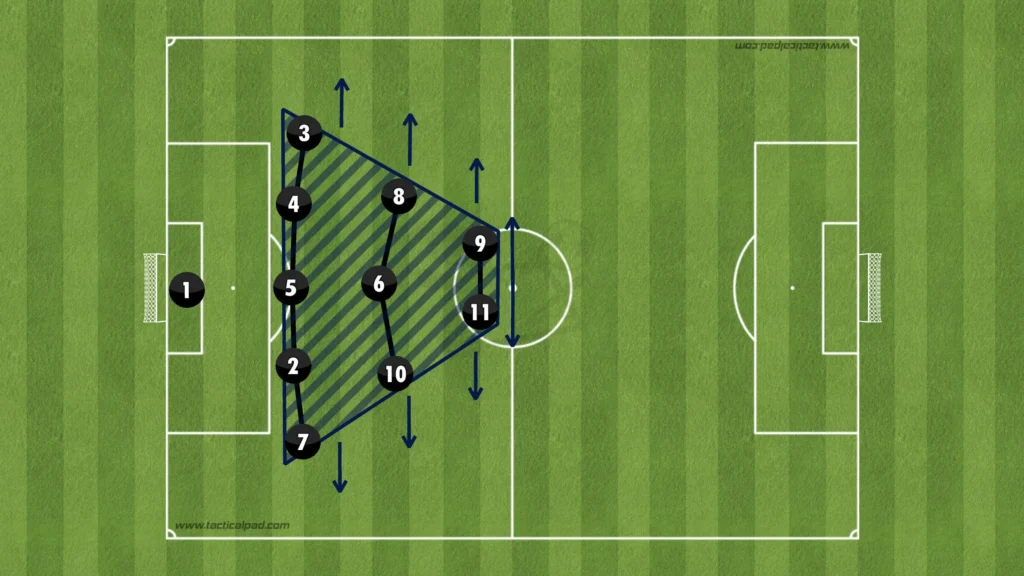
How to deal with wide advancements
When the opposition progresses the ball on the wing, for example through a fullback, someone needs to break out and stop the fullback from advancing. This can be done in two different ways when defending in a 1-5-3-2 formation.
The first way is to push out a central midfielder. When this happens, the other two central midfielders need to shift across to close the center. This often leaves big spaces on the other side. However, the long switch is difficult to play with control, and if they make it, the players will have enough time to come across and win the ball.
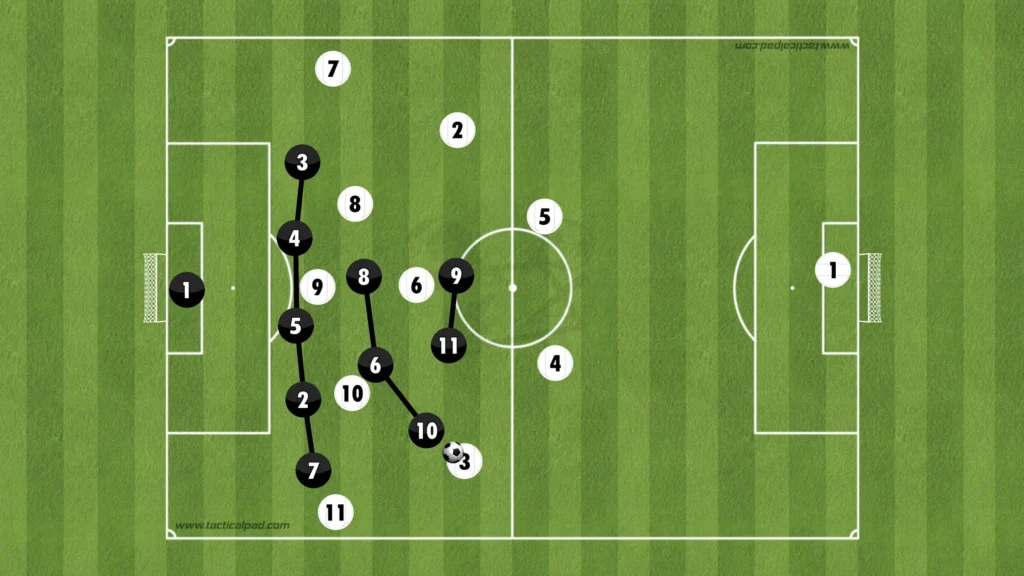
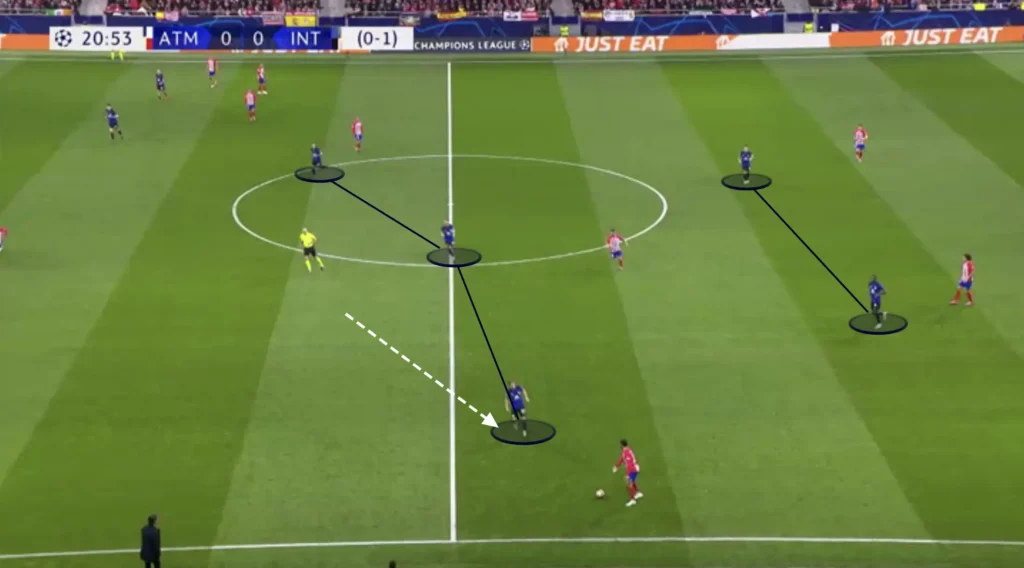
The other way is to push up the wingback. When this happens, the other defenders must shift across to close the spaces between the defenders. This can leave big spaces in the backline for the opposition to exploit. However, the midfield will be more compact, and if the defenders are synchronized in their movements, the gaps should not be too big.
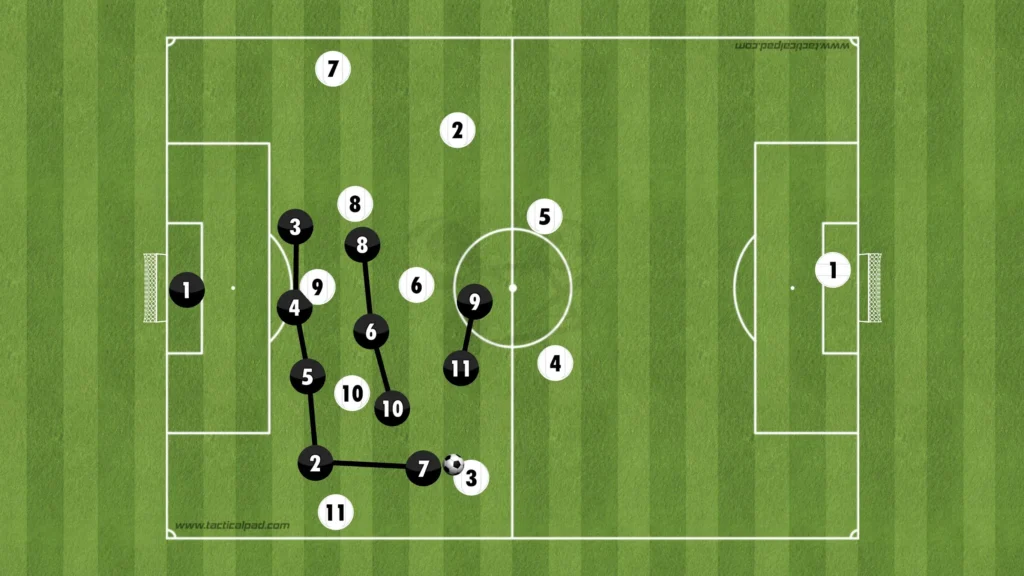
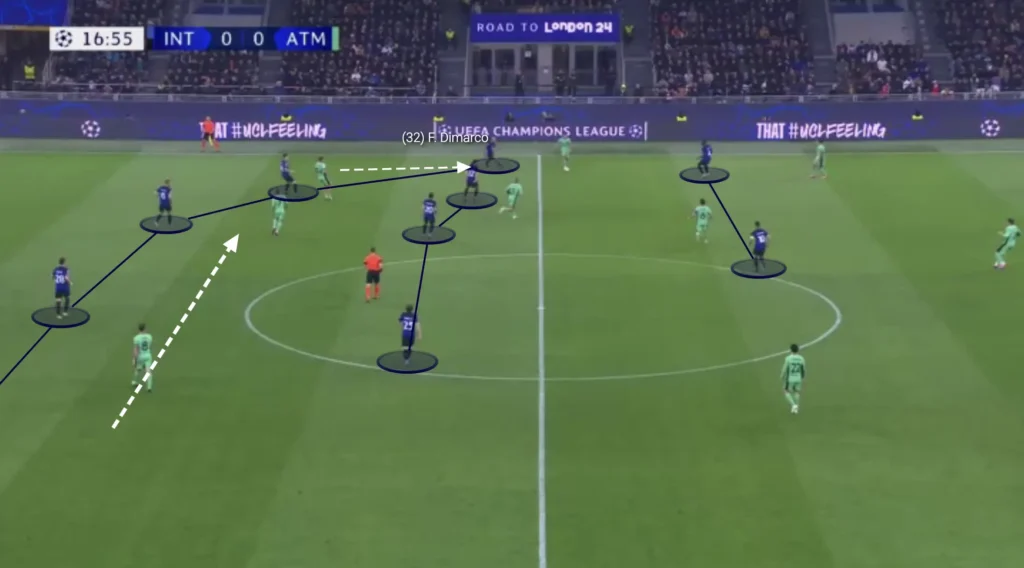
Problems with closing all spaces
A common problem with this formation is that it is difficult for the midfielders to come across and close all the spaces when the opposition switches sides. The three midfielders behind the strikers have to quickly shift over to close the center and stay compact. If you are defending during big parts of the game, this can become tiring, the midfielders can’t come over as fast, and spaces may start to appear.
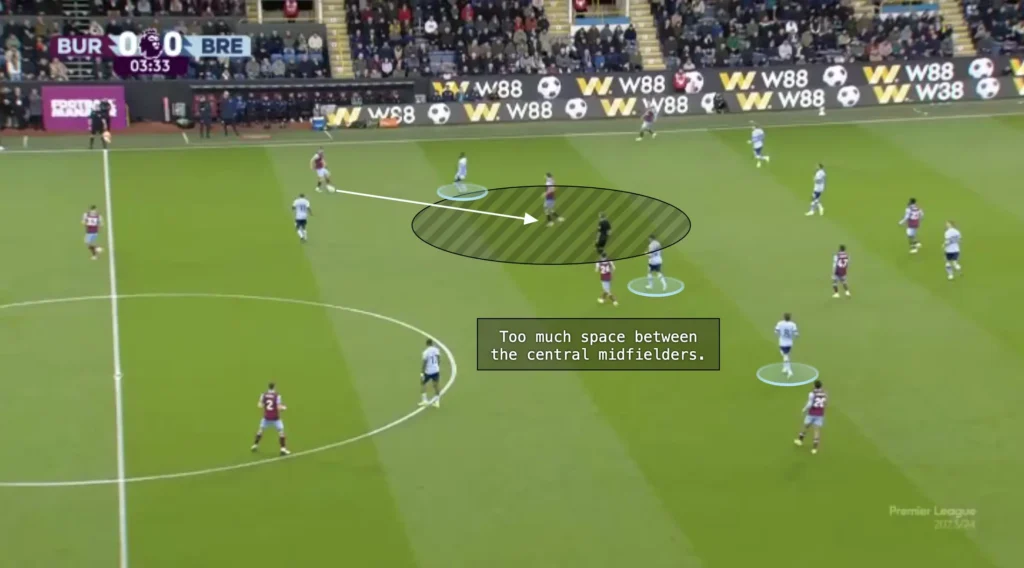
Stopping the switch of play
To stop the opposition from switching sides too often, the players could close all entries to the midfield and force the opposition to switch the play by going all the way back to the center-backs. To do this, the ball-side wingback, ball-side midfielder, and the two strikers should form a diagonal line. This diagonal line stops the opposition from going through the middle to switch sides. Instead, they have to go back to the center-backs and, from there, get the ball to the other fullback. This gives the defending team enough time to shift across, allowing them to keep the compact shape.
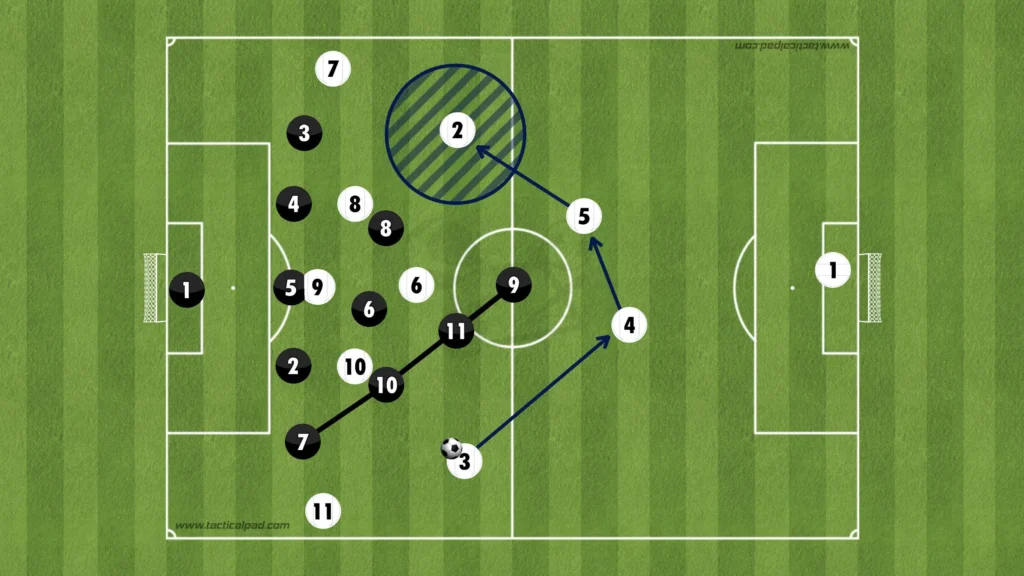
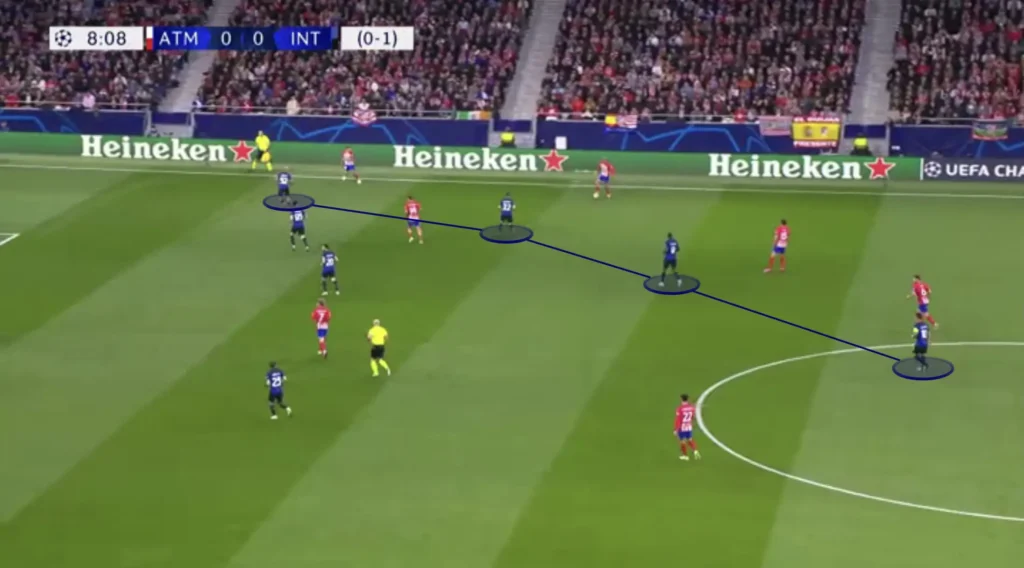
Counterattack
The 1-5-3-2 formation is particularly potent for counterattacks due to its two-striker setup and the support from the central midfielders. When the team regains possession, the strikers can quickly exploit the spaces behind the opposition’s defense, using their partnership to outmaneuver defenders. The central midfielders, positioned just behind the strikers, can drive forward with the ball, creating opportunities for through-balls and quick combinations.
This is a counterattack from Inter, who defend in a 1-5-3-2 formation, where the strikers, midfielders, and wingbacks combine to create a 5v3 counterattacking opportunity.
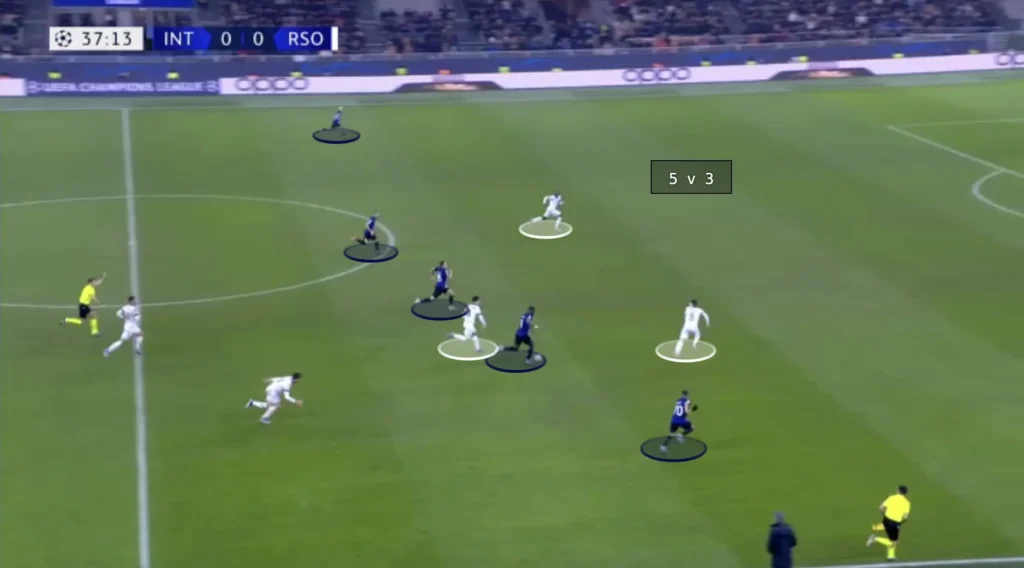
Build-up
Building up in a 1-3-5-2 formation focuses on creating a solid foundation from the back while offering plenty of options in midfield and attack. The three center-backs provide defensive stability and allow the team to spread out across the width of the pitch, making it easier to play out from the back under pressure. The five midfielders, including wing-backs who push high up the flanks, ensure that the team maintains width and can transition smoothly into attack. The central midfielders offer passing lanes and help maintain possession, while the two forwards stay positioned to exploit spaces behind the opposition’s defense. This formation allows for fluid movement and numerical superiority in key areas, making it effective in controlling the tempo and building sustained attacks.
Low Build-up
The 1-3-5-2 formation offers much flexibility in the low build-up. The goalkeeper can move up into the backline to create a back four, allowing the wingbacks to push higher. The three central midfielders can fluidly move around to create different structures. Furthermore, a striker could drop into the midfield to create central overloads.
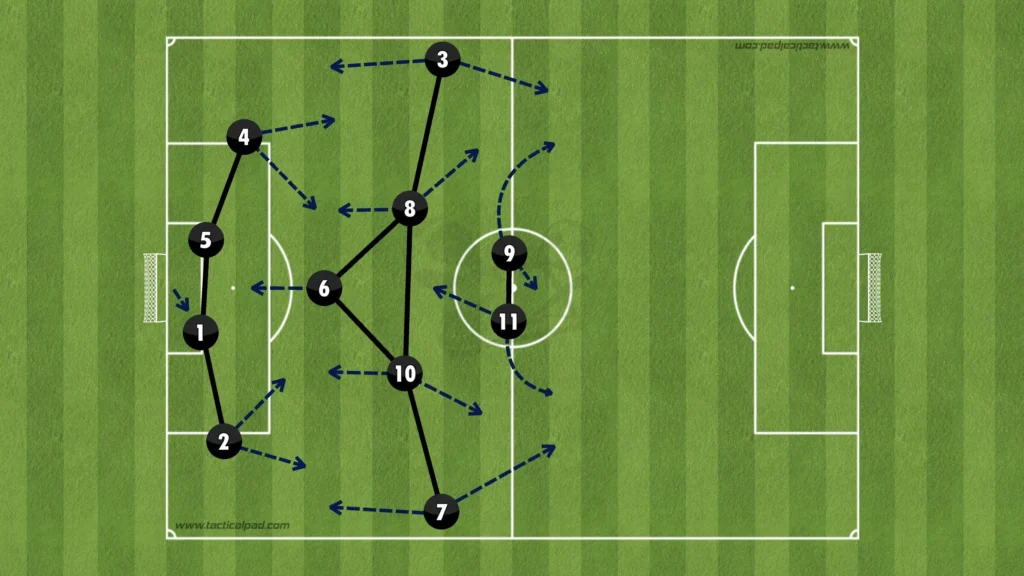
Low build-up while -1 in the forward line
If the opposition comes up and presses with one striker and four defenders, there will be a numerical disadvantage up top but a numerical advantage at the back. The goalkeeper and center-backs can create a 3v1 against the opposition striker and use that numerical advantage to find a free center-back who can take the ball forward past the striker. From there, the center-back will attract the press from a new opponent, which opens the space for a teammate.
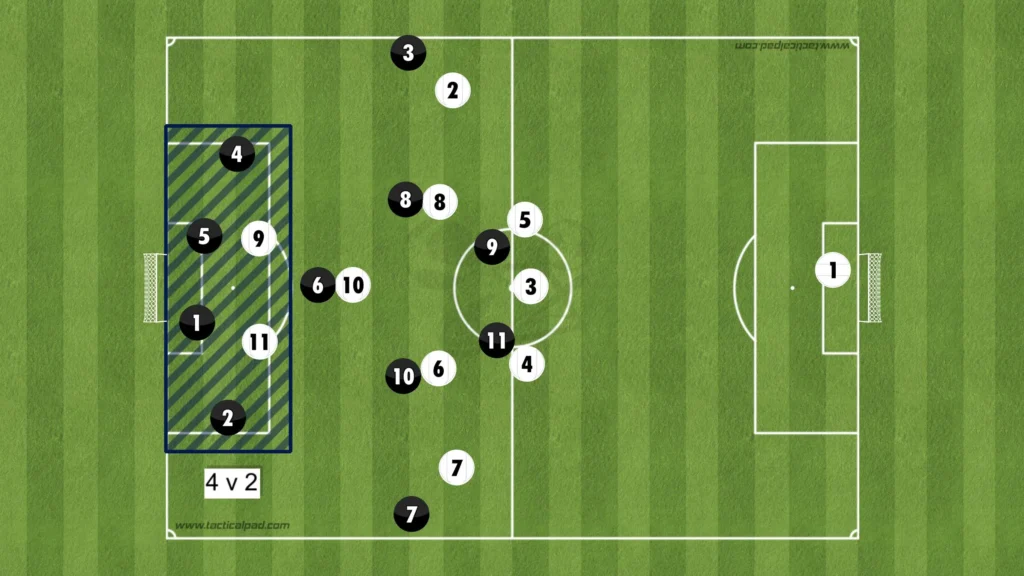
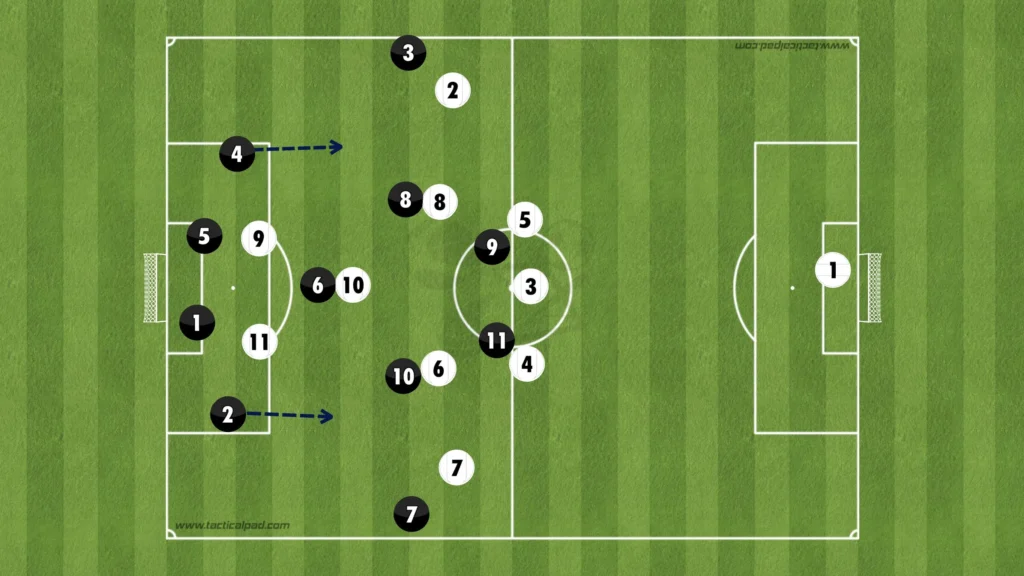
Low build-up vs man-to-man system (numerical equality)
If the opposition comes up and presses man-to-man, there will be numerical equality all over the pitch. The only place where a numerical advantage could be made is in your own penalty area with the goalkeeper and center-backs against the opposition strikers.
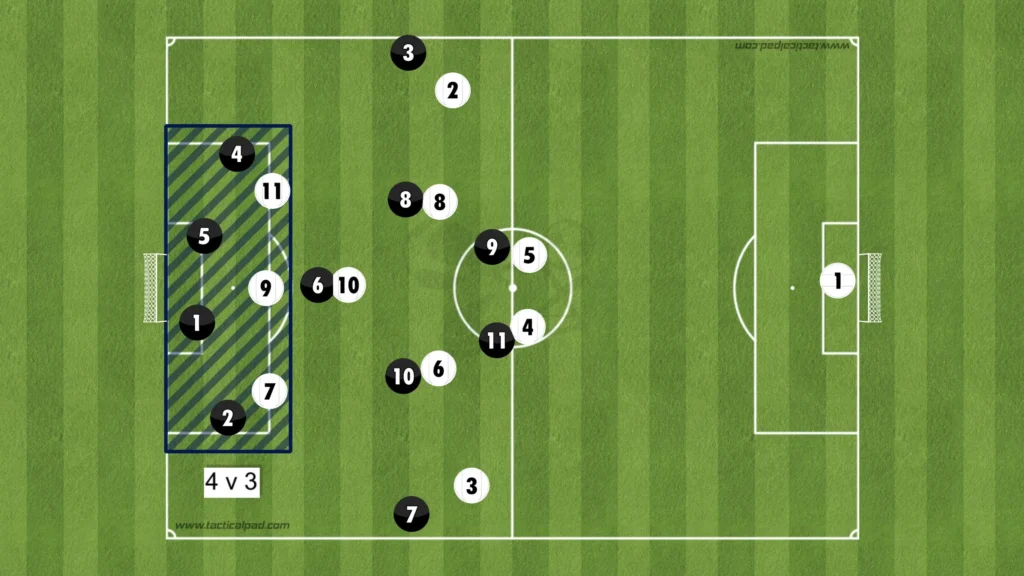
This 4v3 can be exploited to find a free center-back who can take the ball forward. A wide center-back will be open if the goalkeeper and central center-back can attract pressure from the opposition striker and one of the wingers. The ball could be played to the open center-back, who can take the ball forward and attract the press from a new opponent, which opens the space for a teammate.
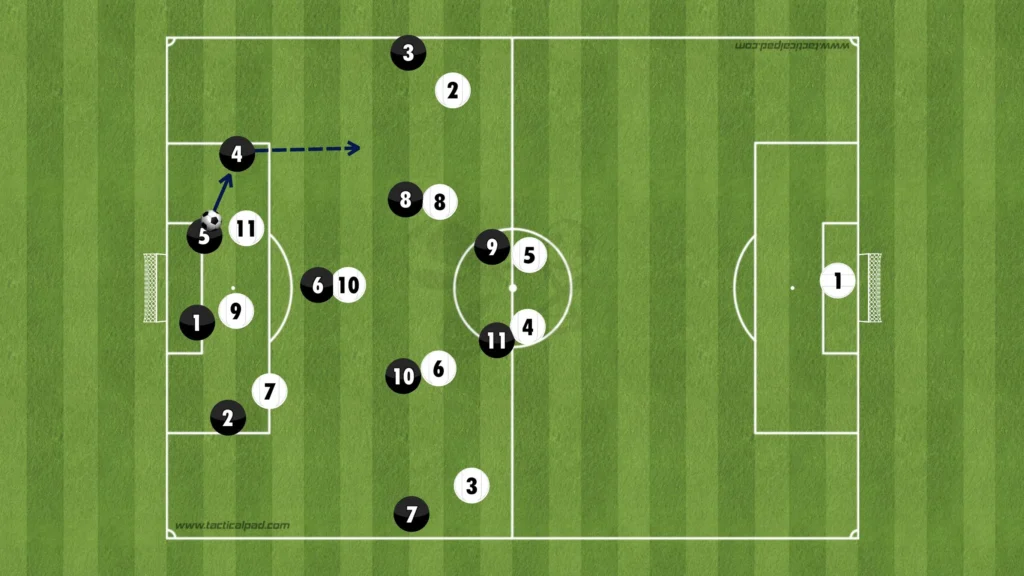
Here, Inter creates a 4v3 against Real Sociedad’s front three and finds the free center-back who can drive forward with the ball.
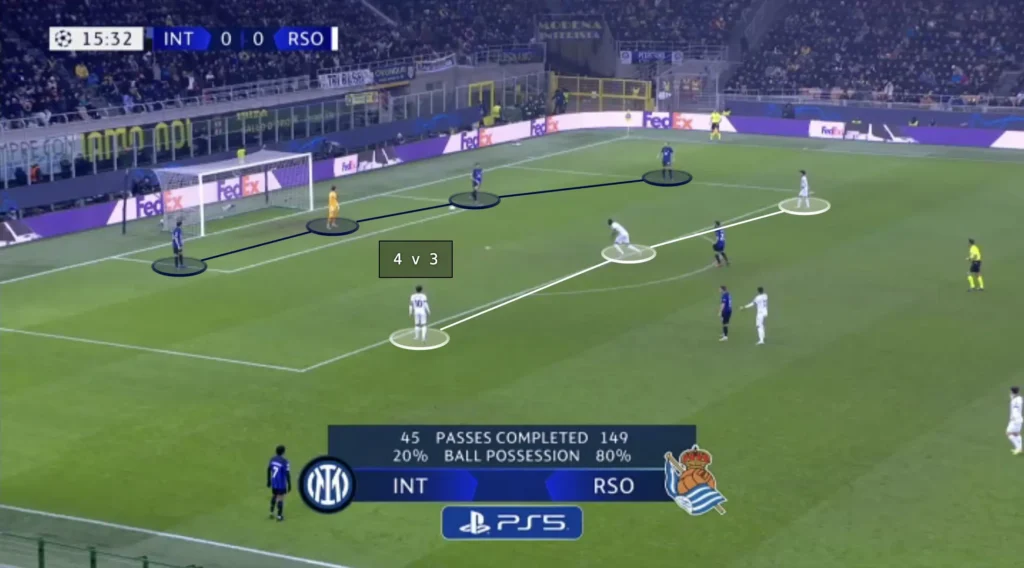
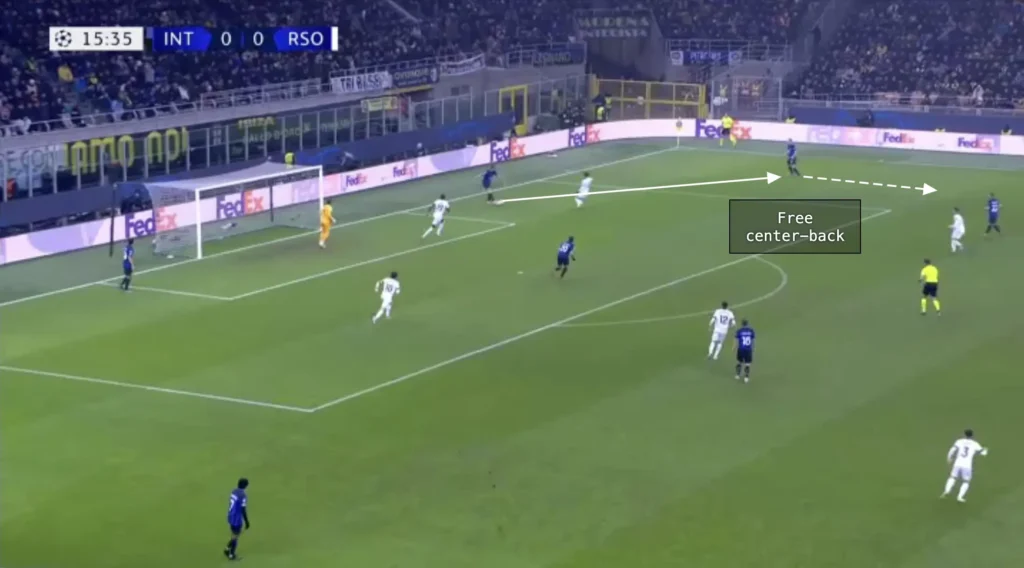
Building up like this is great in theory but requires massive concentration, training, and technique. One bad pass or bad touch will lead to a certain goal. To avoid that risk, many teams go long when building up against a man-to-man system. In the 1-3-5-2 formation, there will be a 5v5 high up the pitch to compete for a long ball. The two strikers can work together to win the first ball and the three central midfielders can work together to win the second ball. The midfielders must get around their opponents and anticipate where the second ball will land when the long ball comes.
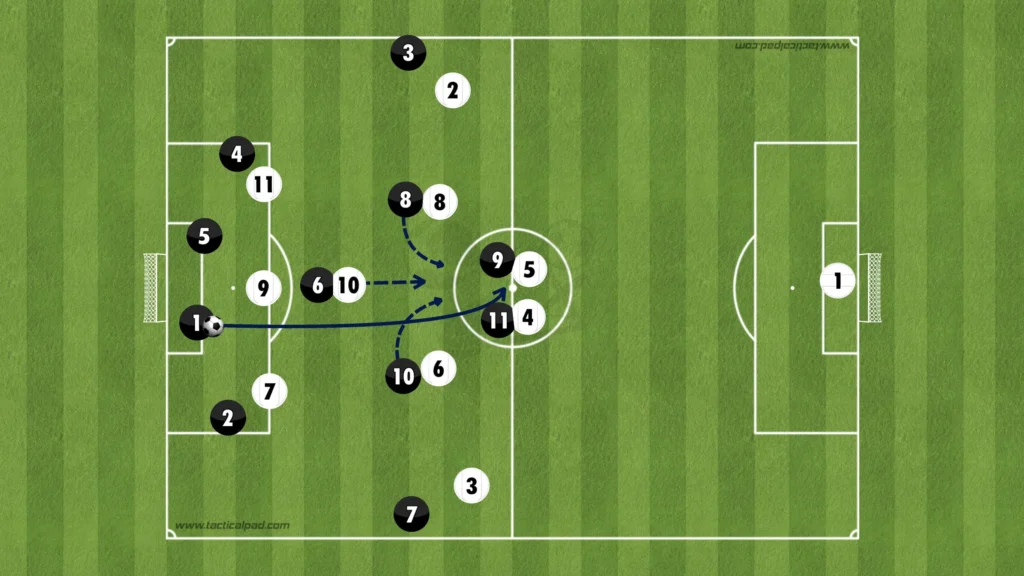
High Build-up
The 1-3-5-2 formation can be used in many different ways in the high build-up. The number-six can drop into the backline, creating a back four. The wingbacks play a crucial role, providing either high or low width in attack. The number-eights can drop down next to the number-six or make runs in behind. The strikers could also make runs in behind or drop into the midfield to create overloads.
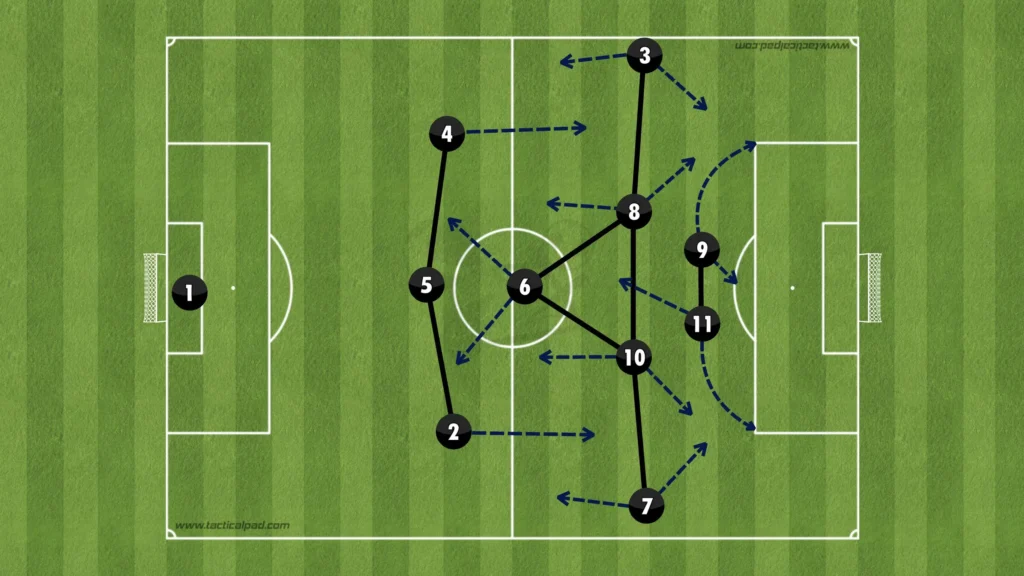
Numerical Advantage in the Midfield
Having only the two wingbacks out wide and the rest of the players in the middle creates more options in the center and less space between the players. With the strikers and midfielders moving around, you will almost always have a numerical advantage in the midfield. This means at least one midfielder will always be open. Therefore, 1-3-5-2 playing teams should prioritize playing through the middle. You will have one player out wide to pull the opposition apart while the rest create numerical advantages in the midfield areas. This builds good conditions in defensive transitions, allowing more players to counterpress when losing the ball.
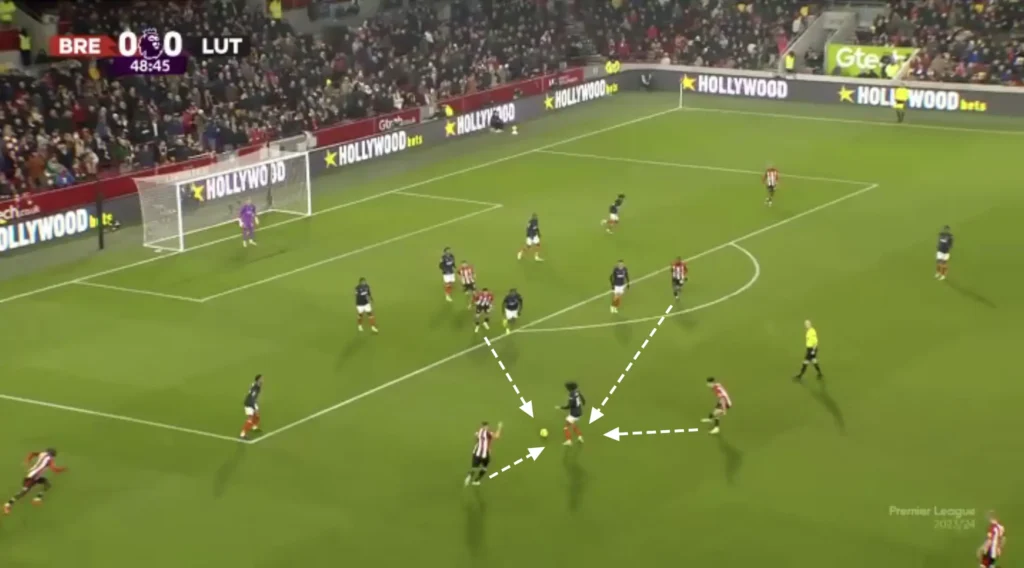
Another purpose for keeping many players in the middle is to shorten the distance between them. This shortens the length of the passes, which naturally shortens the time between passes. This means the opposition players will have less time to push up and press, giving the players more time and control with the ball.
Striker teamwork
In the 1-3-5-2 formation, the teamwork between the two strikers is crucial for the success of the team’s attack. Positioned closely together, these forwards need to develop a strong understanding of each other’s movements to create space and exploit defensive gaps. This interplay allows them to combine quickly in tight spaces, exchange quick passes, and create goal-scoring opportunities. One striker can drop deeper while the other stays high to pin the center-backs. This creates space for the dropping striker between the lines, allowing him to get the ball, turn and attack the backline.
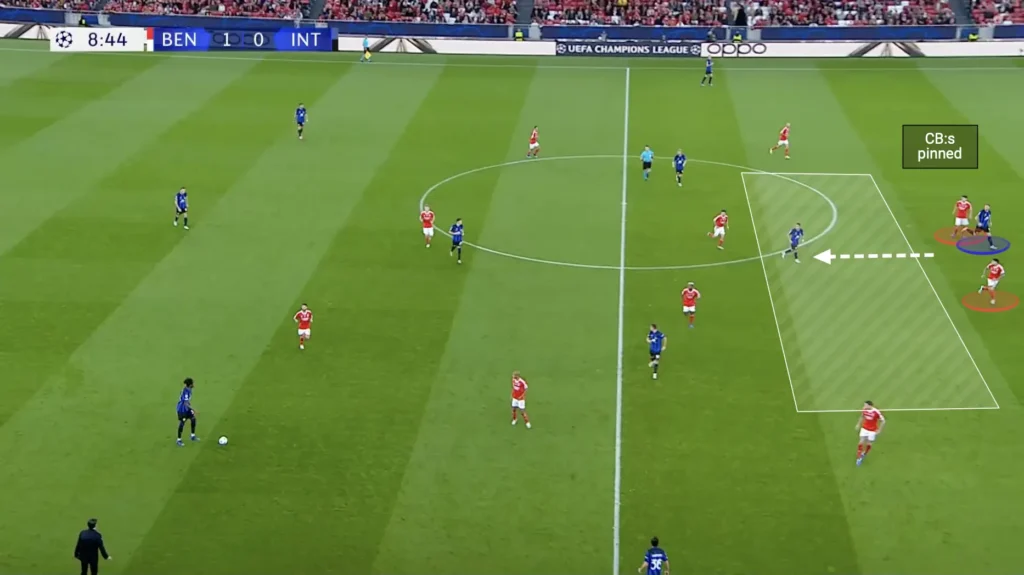
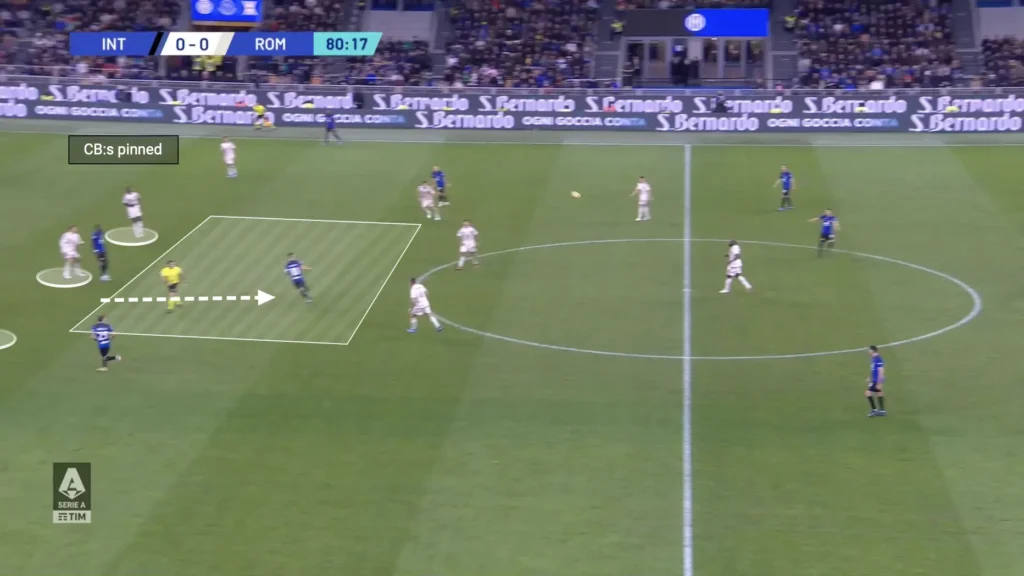
If a center-back pushes up on the dropping striker, a massive space opens up for the other striker to attack and receive a through-ball from backline or midfield.
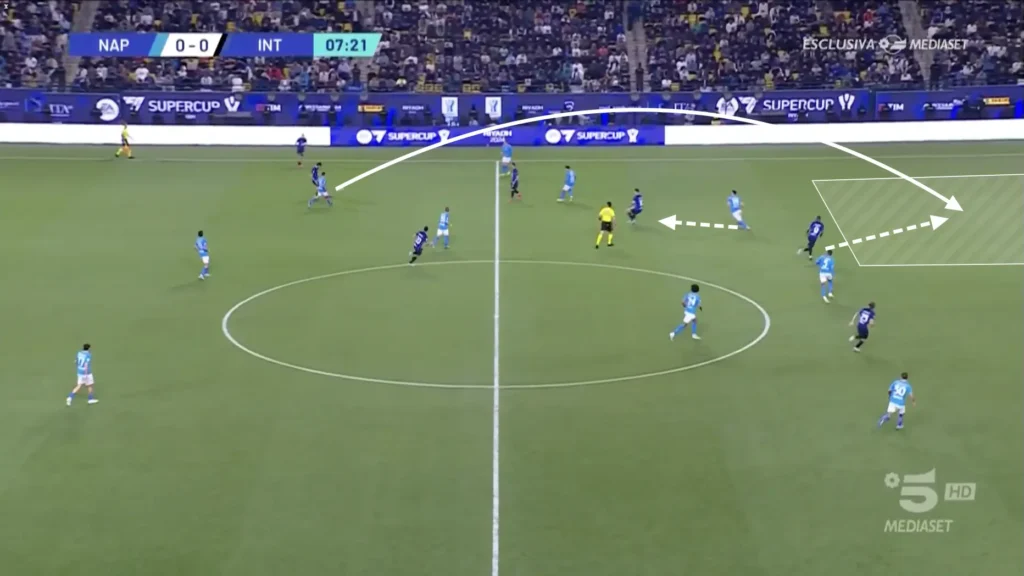
Center-backs joining the attack
In the 1-3-5-2 formation, center-backs can play a crucial role in joining the attack, particularly during the build-up phase. With three central defenders, the outside center-backs have the freedom to push forward into midfield when in possession, creating numerical superiority and adding an extra layer to the attack. This movement can disrupt the opposition’s defensive structure, as it forces their forwards or midfielders to track back, potentially leaving space for the wing-backs or central midfielders to exploit. Additionally, these forward runs can help create overloads on the flanks or through the center, making it harder for the opposing team to maintain their defensive shape. The wide center-backs can, for example, make underlapping runs, creating questions for the opposition and more unpredictability in attack.
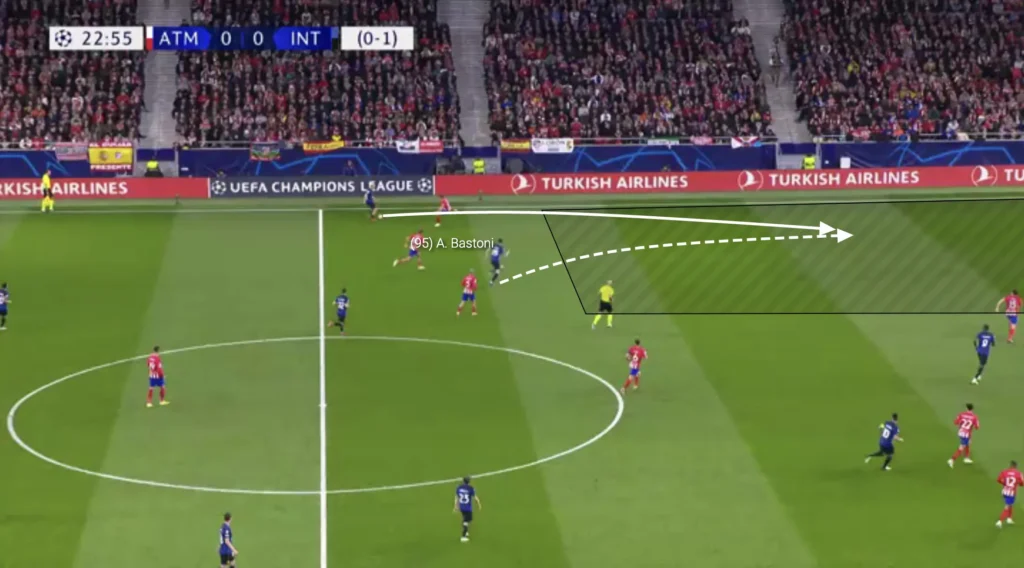
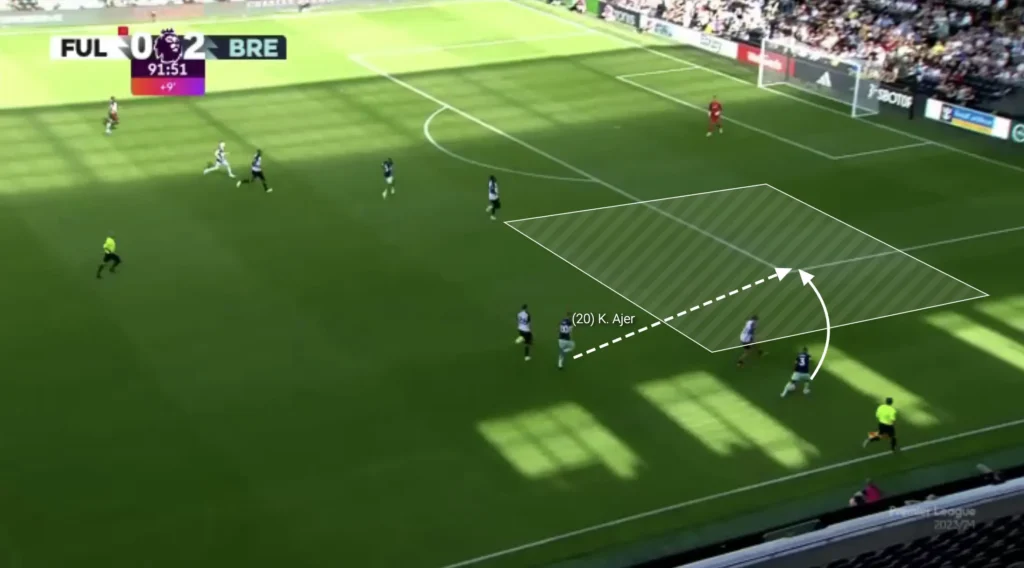
Many players high up the pitch
With the number-eights and wingbacks pushing up, many players will naturally be high up the pitch in attack. Six players will be very high and can, for example, overload the box in crossing situations. The overloads in the box increase the chances of connecting with the cross, as more players present multiple targets for the crosser, making it harder for defenders to mark everyone effectively. Additionally, having multiple players in the box provides options for different types of finishes, whether it’s a header, volley, or a quick tap-in. It also allows for better positioning to react to second balls or rebounds, increasing the likelihood of capitalizing on any defensive errors.
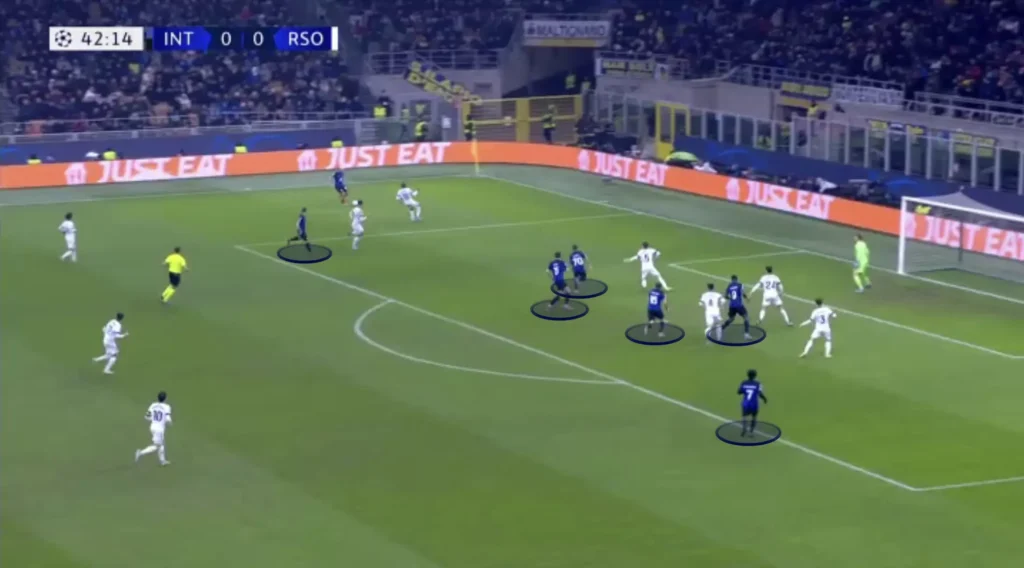
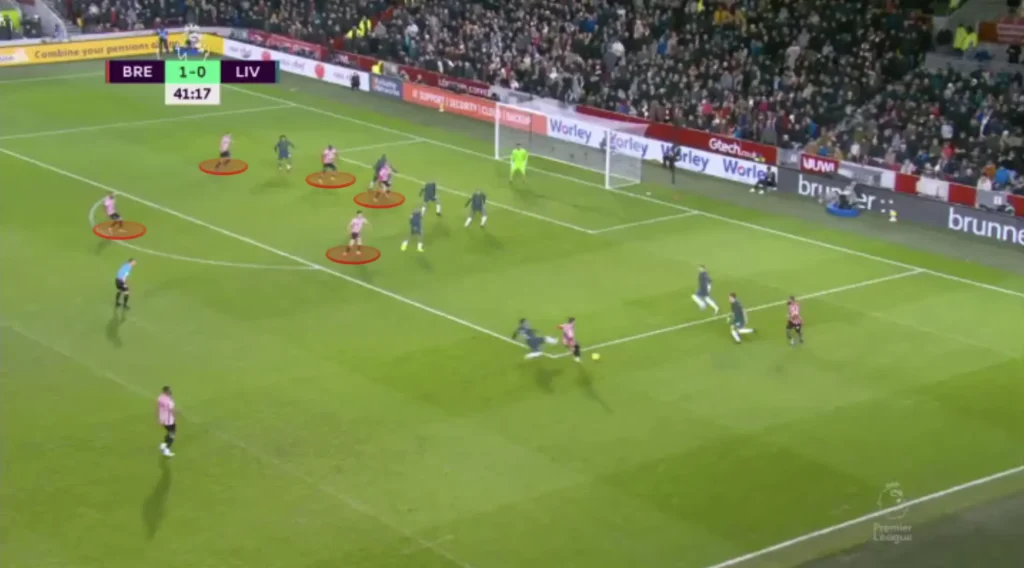
In the 1-3-5-2 formation, the attacking wingbacks can score many goals from crosses at the back post. The opposition fullback will often be preoccupied with a number-eight, which leaves massive space at the back post for the wingback to attack. The wingback can be found directly or indirectly if no one else connects with the cross.
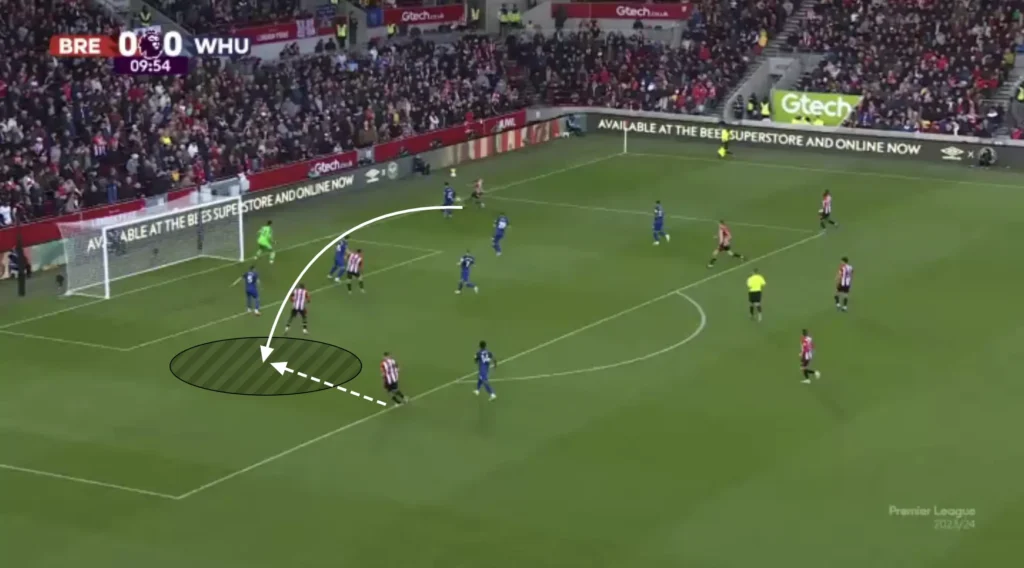
Good conditions to defend counterattacks
Defending against counterattacks is often easier with a back three because the formation naturally provides more coverage across the width of the pitch. With three central defenders, there is typically one defender free to cover any gaps left by the other two, even when the team is caught out of position. This setup allows one center-back to step forward to challenge the ball carrier, while the other two can provide support or cover the space behind. Additionally, the wider positioning of the outside center-backs helps to close down attacks that develop on the flanks, reducing the risk of being overwhelmed by a swift counterattack. This added layer of security makes a back three particularly effective in mitigating the dangers of fast transitions from the opposition.
Final Thoughts
In conclusion, the 1-3-5-2 formation offers a balanced approach to both offense and defense, making it a popular choice among managers who value flexibility and control. Its structure allows for effective high pressing, compact defensive organization, and fluid build-up play, all while maintaining a solid foundation against counterattacks. By understanding the nuances of this formation, teams can exploit its strengths to dominate the midfield, create numerical advantages, and launch powerful counterattacks. While it requires disciplined and well-coordinated players, the 1-3-5-2 can be a highly effective formation when executed properly.
